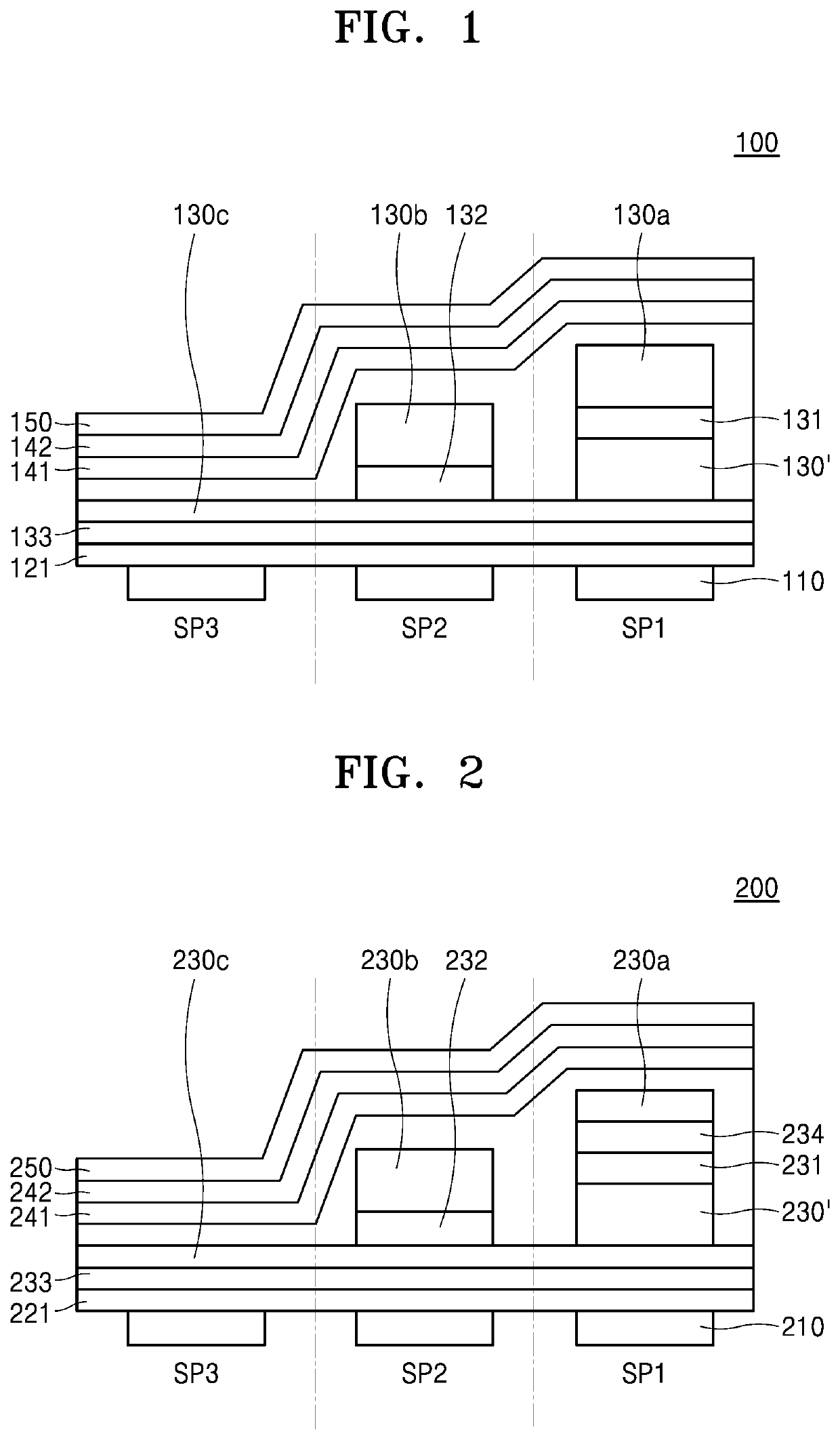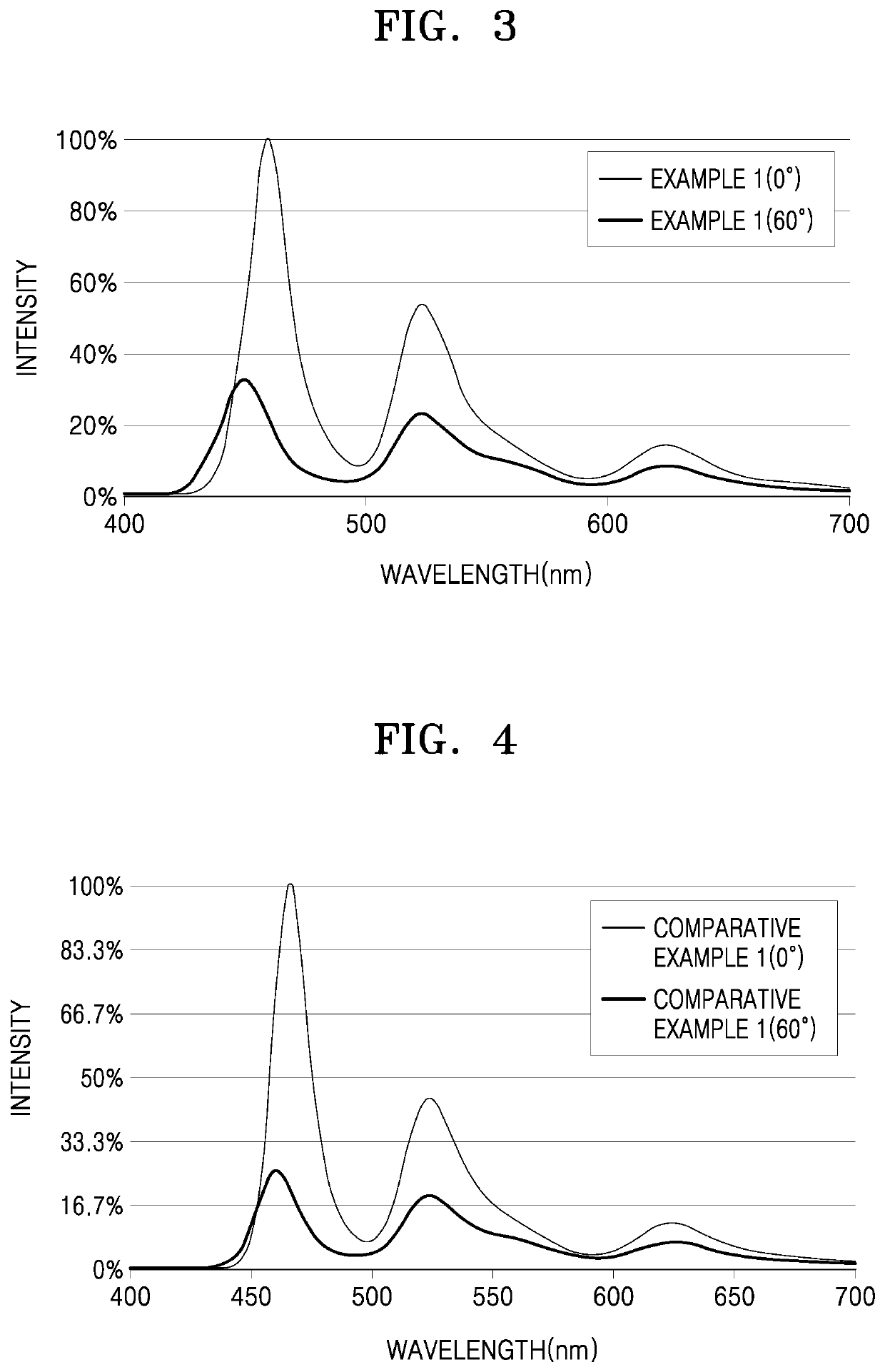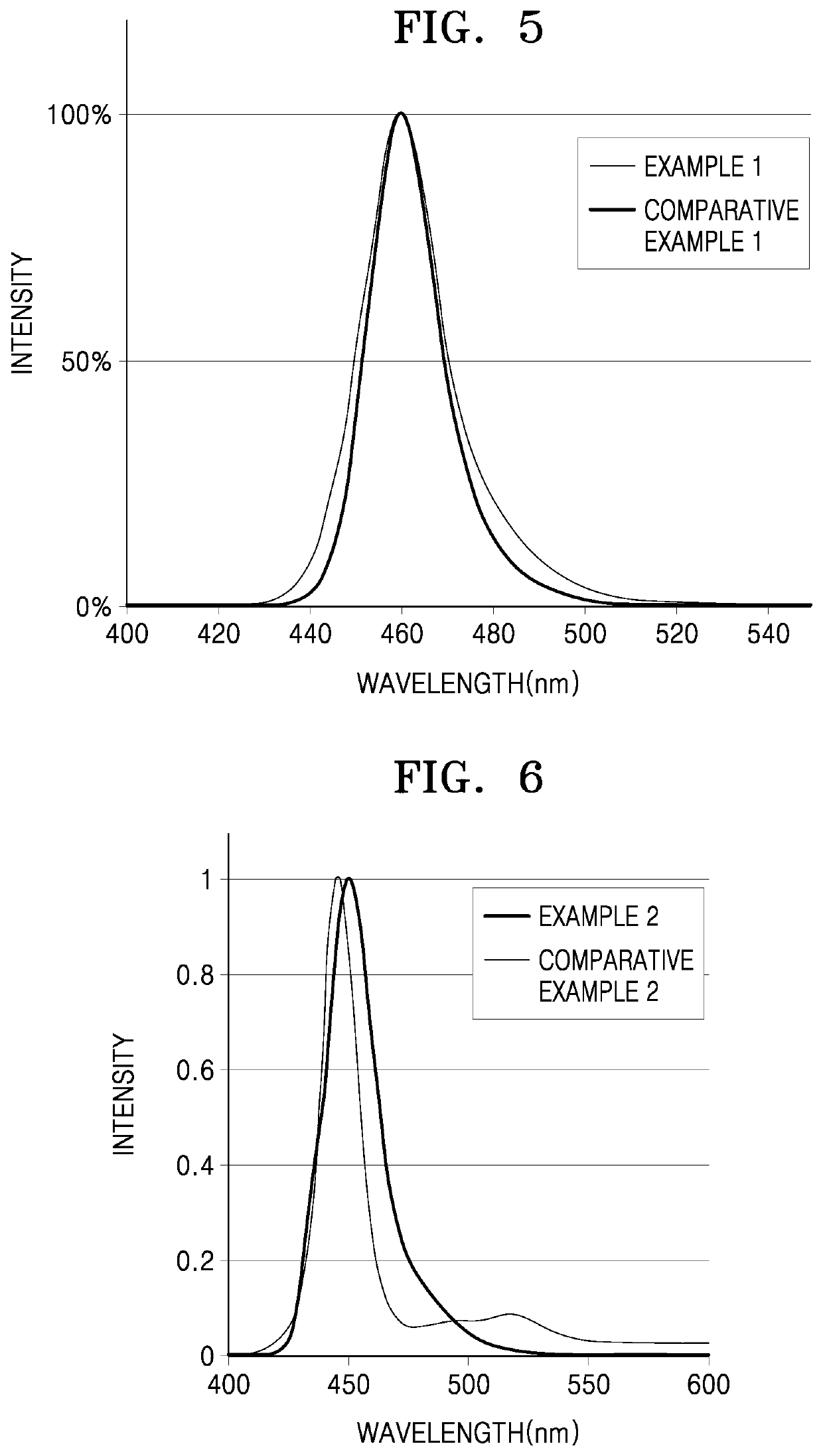Light-emitting device
a light-emitting device and light-emitting technology, applied in the field of light-emitting devices, can solve the problems of color mixing and a reduction in lifespan, the absence of the auxiliary layer of the single device, and the difficulty of securing a viewing angle, so as to prevent or reduce color mixing
- Summary
- Abstract
- Description
- Claims
- Application Information
AI Technical Summary
Benefits of technology
Problems solved by technology
Method used
Image
Examples
example 1
[0404]As an anode, a Corning 15 Ω / cm2 (1,200 Å) ITO glass substrate was cut to a size of 50 mm×50 mm×0.7 mm, sonicated with isopropyl alcohol and pure water each for 5 minutes, and then cleaned by exposure to ultraviolet rays and ozone for 30 minutes. Then, the ITO glass substrate was provided to a vacuum deposition apparatus.
[0405]HT3 and HAT-CN were co-deposited on the ITO glass substrate to a weight ratio of 99:1 to a thickness of 50 Å and HT3 was deposited thereon to a thickness of 220 Å to form a hole injection layer having a total thickness of 270 Å, and m-MTDATA was vacuum-deposited on the hole injection layer to form a hole transport layer having a thickness of 50 Å.
[0406]CBP (host) and Ir(ppy)3 (green dopant) were co-deposited on the hole transport layer to a weight ratio of 94:6 to form a green emission layer having a thickness of 250 Å as a common layer.
[0407]Then, HT3 and m-MTDATA were co-deposited on the green emission layer in a blue sub-pixel region to a weight ratio ...
example 2
[0420]As an anode, a Corning 15 Ω / cm2 (1,200 Å) ITO glass substrate was cut to a size of 50 mm×50 mm×0.7 mm, sonicated with isopropyl alcohol and pure water each for 5 minutes, and then cleaned by exposure to ultraviolet rays and ozone for 30 minutes. Then, the ITO glass substrate was provided to a vacuum deposition apparatus.
[0421]HT3 and HAT-CN were co-deposited on the ITO glass substrate to a weight ratio of 99:1 to a thickness of 50 Å and HT3 was deposited thereon to a thickness of 220 Å to form a hole injection layer having a total thickness of 270 Å, and m-MTDATA was vacuum-deposited on the hole injection layer to form a hole transport layer having a thickness of 50 Å.
[0422]CBP (host) and Ir(ppy)3 (green dopant) were co-deposited on the hole transport layer to a weight ratio of 94:6 to form a green emission layer having a thickness of 250 Å as a common layer.
[0423]Then, HT3 and m-MTDATA were co-deposited on the green emission layer in a blue sub-pixel region to a weight ratio ...
example 3
[0442]As an anode, a Corning 15 Ω / cm2 (1,200 Å) ITO glass substrate was cut to a size of 50 mm×50 mm×0.7 mm, sonicated with isopropyl alcohol and pure water each for 5 minutes, and then cleaned by exposure to ultraviolet rays and ozone for 30 minutes. Then, the ITO glass substrate was provided to a vacuum deposition apparatus.
[0443]HT3 and HAT-CN were co-deposited on the ITO glass substrate to a weight ratio of 99:1 to a thickness of 50 Å and HT3 was deposited thereon to a thickness of 220 Å to form a hole injection layer having a total thickness of 270 Å, and m-MTDATA was vacuum-deposited on the hole injection layer to form a hole transport layer having a thickness of 50 Å.
[0444]CBP (host) and Ir(ppy)3 (green dopant) were co-deposited on the hole transport layer to a weight ratio of 94:6 to form a green emission layer having a thickness of 250 Å as a common layer.
[0445]Then, HT3 and m-MTDATA were co-deposited on the green emission layer in a blue sub-pixel region to a weight ratio ...
PUM
| Property | Measurement | Unit |
|---|---|---|
| FWHM | aaaaa | aaaaa |
| FWHM | aaaaa | aaaaa |
| HOMO energy level | aaaaa | aaaaa |
Abstract
Description
Claims
Application Information
 Login to View More
Login to View More - R&D
- Intellectual Property
- Life Sciences
- Materials
- Tech Scout
- Unparalleled Data Quality
- Higher Quality Content
- 60% Fewer Hallucinations
Browse by: Latest US Patents, China's latest patents, Technical Efficacy Thesaurus, Application Domain, Technology Topic, Popular Technical Reports.
© 2025 PatSnap. All rights reserved.Legal|Privacy policy|Modern Slavery Act Transparency Statement|Sitemap|About US| Contact US: help@patsnap.com



